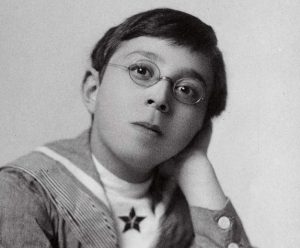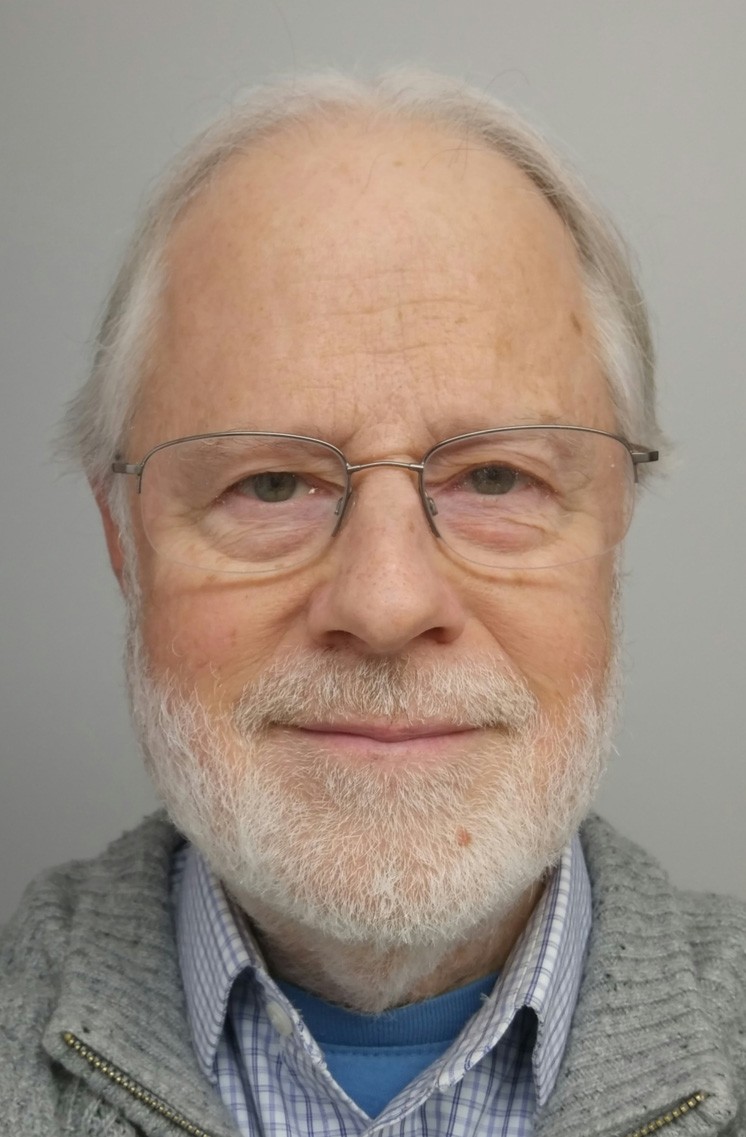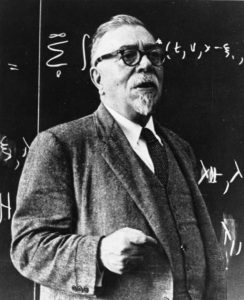Shortly before my retirement as a computer science professor, one of my master’s degree students asked me for my academic genealogy, intending to attach himself at the end of it. I had not heard of the concept of an academic genealogy before then, but I was immediately intrigued and started tracing mine.
An academic genealogy is a sequence of advisor-advisee relationships, usually (in modern times) a sequence of PhD dissertation advisor-advisee relationships. A person with a PhD may have only one advisor (analogous to a parent in a biological genealogy) or two co-advisors. It is even possible that a PhD holder would have three “parents”; perhaps, for example, there were initially two co-advisors, but one of them died and was replaced by a third faculty member.
As we go back in time to a period before the existence of the PhD degree, we can use the Master’s degree advisor-advisee relationship as the connecting link between generations; other types of connecting links are also plausible (at least to some).
As I researched my academic lineage, the Mathematics Genealogy Project (MGP) provided a great deal of relevant information (a little of it erroneous but since then corrected in its database). The MGP can be accessed here or here.
The fact that thesis titles are supplied for many of the people in the MGP … gives me a modest level of confidence in its reliability.
For the MGP new information or corrections are submitted and vetted, and the submission forms include space for sources and references. The MGP does not currently display sources or references, though its director, Dr. Mitchel Keller, reports, “we are happy to respond to inquiries regarding our data sources and references for specific entries. (The first ~30,000 entries do not have very useful comments regarding sourcing, unfortunately.)”
The similar Academic Family Tree at https://academictree.org/ reports the person or organization that contributed data and allows contributors to supply a comment with additional details, potentially including their source(s). Users with the status of editor can directly make changes in the Academic Family Tree.
The fact that thesis titles are supplied for many of the people in the MGP, even some in the sixteenth century, gives me a modest level of confidence in its reliability. For most people in its database the MGP does a good job of briefly describing the type of relationship they had with each advisor or student. In the Academic Family Tree the displays of detailed information about people in the tree specify the nature of their connections to their advisors and advisees.
Some other types of teacher-student lineages are spiritual lineages and musical lineages.
My academic lineage, with a discussion of the types of links involved, can be found in an HTML version (328K) or a PDF version (325K). My apologies for the possible small visual defects which allow the files to be reasonably small and thus quickly downloadable.
Some other types of teacher-student lineages are spiritual lineages and musical lineages. I have an author friend who is a genealogist and a musician, and he knows his “musical descent” from Claude Debussy (who was a teacher of the teacher of his immediate teacher). The mother of another friend studied ballet with a student of a student of Michel Fokine.
In all of these lineages there is a concept of transmission. In the biological case, genes are transmitted (among other things). In the teacher-pupil case, knowledge and techniques are being transmitted, though exactly what knowledge and techniques may be difficult or even impossible to determine. How then shall we research, describe, or cite the transmission of knowledge and techniques (when we are documenting the lineage)?
A common answer is that we can document approval but not necessarily agreement. People being awarded a PhD have presumably learned something from their advisor(s), but in some cases may come to believe that the theories or approaches pursued by their advisors are fundamentally flawed and that completely different alternatives are required. In such cases, the advisors’ signatures at the front of the dissertation document indicate approval of the receipt of the PhD degree by the student. If the advisors know of the student’s disagreement with them, they are, by signing, not indicating agreement with the student’s positions but rather approval of the student’s capabilities in research and presentation of results.
So, we can document the approval link between teacher(s) and newly-minted-PhDs, and it may be a proxy for the transmission of conceptual frameworks, methodology, knowledge, and even attitudes and biases.
In the case of my academic ancestor Norbert Wiener, we have his statement (quoted in my chart): “I have never heard the equal of Hardy for clarity, for interest, or for intellectual power. If I am to claim any man as my master in my mathematical training, it must be G. H. Hardy.” So a transmission-of-knowledge case could be made for giving Wiener three “parents,” his two formal advisors Royce and Schmidt and his teacher G. H. Hardy.
If we explore Hardy’s academic ancestry, we find that one of his academic “grandfathers” was George Darwin (a son of Charles Darwin), whose academic ancestry according to the MGP goes back to such figures as Isaac Newton. A number of the links connecting Hardy to Newton are from a University of Cambridge tutor to the tutored student, who received a Cambridge M.A.[1] Indeed, Newton himself received an M.A. from Cambridge in 1668 and was, according to the MGP, an academic descendant of Galileo Galilei, who received a degree from the Università di Pisa in 1585. Galileo is 15 “generations” before Hardy in the first connecting lineage that I found; there may be others. (Just as in biological genealogy, an academic “ancestor” may appear in several places in a “family tree.”)
So we have here the transmission of ideas and their transmutation.
Note that in my chart Immanuel Kant is connected to Karl Leonhard Reinhold via an arrow whose label (spelled out) is “Significant intellectual influence, correspondent.” Kant was not an advisor to Reinhold. Rather, Reinhold was at first a student of Kant’s ideas, then an interpreter/popularizer of them, and finally an updater/simplifier of them. He was also a freemason and a member of the Illuminati (the enlightenment-oriented if legalistic version of that secret society, not the fictional/conspiracy-theory one).
So we have here the transmission of ideas and their transmutation. Kant’s advisor’s advisor’s advisor was the German philosopher and mathematician Gottfried Wilhelm Leibniz, who (aided by supportive colleagues) contested with Isaac Newton (above) for the credit for inventing calculus. Thus two of my academic ancestors (when the phrase is not used too restrictively) struggled against each other, a situation somewhat analogous to the fact that I have biological ancestors on both sides of the U.S. Civil War.
I am fascinated by this academic genealogy in part because it is a sampling of the intellectual history of the human race. It also illustrates the development of higher education in Europe and its export to the U.S. (with modification) by such figures as Charles W. Eliot, who spent several years in Europe studying its universities and then returned to America and as president of Harvard led its transformation from a provincial college into a world-class research university.
There are some interesting connections between my biological genealogy and my academic one. My mother’s maiden name was Lanman, and her great-uncle Charles Rockwell Lanman was a professor of Sanskrit at Harvard. Charles Lanman’s world intersected with that of two of my academic ancestors, Josiah Royce and his student Norbert Wiener. Royce and Lanman were acquainted from the time when they were both at Johns Hopkins in Baltimore, Royce as a PhD student and Lanman as a Sanskrit professor. Lanman joined the Harvard faculty in 1880, and Royce became a philosophy professor there in 1882. Lanman was a friend and great admirer of Harvard president Charles W. Eliot. The following two stories are presented largely as they were conveyed to me by a granddaughter of Prof. Lanman.
The Charles Lanman family lived on Farrar Street in Cambridge, and Josiah Royce lived in the next block down the street.[2] Charles Lanman was a very well-organized person who prized efficiency. For his study in his Farrar Street house (built in 1890) he designed a woodbox that was under a hinged window seat close to his fireplace. The result was convenient and practical. When he invited Josiah Royce over to see his newly finished house, he proudly pointed out the window seat, opening it up to show the handy space for fireplace wood beneath the seat. Josiah R. looked at it with great admiration and said dolefully, “My window-seat is just like my philosophy—impenetrable and empty.”[3]
 Norbert Wiener’s father was a professor of Slavic literature at Harvard, and the Wieners lived in the same neighborhood as the Lanmans. Norbert was the same age as Lanman’s twins Katharine and Jack. When young, the twins had a “twin language” that they used to communicate with each other; no one else could understand what they were saying. (It was modified baby talk, presumably.)
Norbert Wiener’s father was a professor of Slavic literature at Harvard, and the Wieners lived in the same neighborhood as the Lanmans. Norbert was the same age as Lanman’s twins Katharine and Jack. When young, the twins had a “twin language” that they used to communicate with each other; no one else could understand what they were saying. (It was modified baby talk, presumably.)
Once, when these children were no more than two years old, Mrs. Wiener and little Norbert came over to visit. The children played for a while, and then Mrs. Wiener said, “Norbert, would you like to recite a poem for everyone?” Whereupon, the Great Infant Prodigy and Superbrain Norbert stood up and recited a very long poem, accurately and clearly. When he was finished, Jack looked up at him and said, “Blah blah blah blah blah!”[4]
Notes
[1] Such links are, when found in the 1870s and earlier, the academic-genealogy equivalent of an advisor-advisee relationship in a later period.
[2] Between the Lanman and Royce homes was a curve and a change in the street name (from Farrar to Irving). Between those two homes was the home of Prof. William James, and across the street from Royce’s home was the home of Prof. Edward Cummings, whose son E. E. Cummings was a “mud pie pal” of the Lanman children.
[3] A number of details about the Lanman-Royce woodbox story can be found in an article by Prof. Charles Lanman's youngest child, Esther (Lanman) Cushman: “Where the Old Professors Lived,” Proceedings of the Cambridge Historical Society 42 [1970–72]: 14–30 at 27. One of Josiah R.’s students was Clarence I. Lewis, the pioneer of modal logic, whose son Andrew married Charles’s granddaughter, and Esther Cushman’s daughter, Sally Cushman. Esther Cushman’s “Old Professors” article has this quote just before the Lanman-Royce woodbox story:
But Professor Royce's house, now Julia Child's, showed only the traditional plain living and high thinking and retained its gas lights through all the hurricanes. When the rest of us with our unreliable modern inventions (electricity) were plunged in darkness, the Royce house was ablaze with gas lights and Welsbach burners as if to remind the neighbors that the Royces had always stood for sound values and no modern claptrap. I like to think of the contrast between the kitchen in Mrs. Royce's day and now in Julia Child's. Mrs. Royce, a brilliant intellectual in her own right, had little interest in cooking even in Josiah’s day, and when she was widowed in 1916, Campbell's soup assorti became her staple.
[4] “Prodigies’ Progress” by Ann Hulbert in the January-February 2018 issue of Harvard Magazine has much information about Norbert Wiener as a child prodigy.
Share this:

About Don Stone
Don Stone is a retired computer science professor. His interest in genealogy began at the age of 13 when his mother told him that he was descended from the artist John Trumbull. Some library research quickly revealed that he was descended from the artist’s brother, but he was hooked on the subject. Don enjoys researching modern, medieval, and ancient genealogy and making large-format illustrated genealogical charts. He received a Bachelor of Engineering Physics from Cornell University and an M.S. (Computer and Information Science) and a Ph.D. (Instructional Systems) from the University of Pennsylvania.View all posts by Don Stone →
